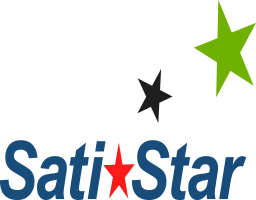Specifications Documents
Overview
To facilitate your selection of a new IT system, we can help by creating a detailed specification document that informs the prospective vendors exactly what is being requested.
Scope And Deliverables
The Importance of Requirements and Specifications
Behind any concerted effort to improve business performance initiative is probably an idea or concept of what the leadership or company executives want done. Behind any rational improvement effort should be a formal structure and methodology.
Most improvement projects include a body of information that describes the improvement objectives and may include some form of automation. Most automation systems are designed to support current processes and may not be suitable to effectively support new or improved processes. In such cases information systems may need modifications or adjustments. Just as important, the IT system will effectively become the Management Control System for the organization. This adds further requirements for reporting and information tracking including the underlying data requirement needed to generate those reports.
Requirements and Specifications Documentation
The following list describes the various kinds formal documents that belong to the body of requirements needed to architect an information system that will support new and improved processes including reports and process alerts as required. These are not all mandatory for each and every project, but they do all provide important information to developers, designers and engineers tasked with implementing an information system. These topics may also be combined as sections of larger and inclusive requirements and specifications documents.
Functional Requirements
Functional requirements describe what the application is supposed to do by defining functions and high-level logic of the information flows. Ideally, the information flows will follow and support the “logic” of the operational processes they are supporting – including providing automated alerts and informational reports for meaningful management control. In many cases, the operational processes requirements are combined with the functional informational requirements in a single system image that represents the improved organizational model. This is particularly important within companies that have a strong Information Technology department that is tasked with doing the work.
Flow or Logic Diagram
Process flow diagrams define the improved business process that will require automation to drive further cost reduction. Information flow diagrams mirror the process flow diagrams and indicate data capture points, data access requirements and management control decision points. The objective is to automate wherever appropriate and reduce process variation.
This is important because most modern IT systems can deliver real-time information flows to anyone who needs to know, anywhere in the world. Effective and efficient processes often require such real-time information flows to be managed properly. It is often the case that providing timely and accurate information is the lever that enables effective improvement. Information flow diagrams map information flows to process flows (including feedback loops and information distribution profiles).
Logic diagrams describe the order in which logical decisions are made during the transmission, gathering, or reporting of information. For example, information may be distributed to several application modules (Purchasing or Finance) for further processing to support downstream operational processes. In other words, the system may automatically distribute data to support concurrent processes. IT systems might also need to distribute notifications required by the operational processes for management control.
Functional Specifications
Functional specifications describe the necessary functions at the level of units and components; these specifications are typically used to build the system (exclusive of the user interface).
The functional specifications document that we’ll help create often includes over 150 specific requirements that a business application typically must have in order to meet functional requirements. The specifications document includes detailed requirements for data capture, data access, information distribution, user access and any metadata (information about data) needed to support information flows or reporting systems.
User Requirements
User requirements typically describe the needs, goals, and tasks of various users across the organization. We recommend that user requirements clearly define and describe the end-user processes, and any related quality and performance measures.
User requirements are usually defined after the completion of an improvement initiative, and address the “look and feel” of the interface, along with definitions of the display of global and particular elements.
What We Will Do
SatiStar will use our proven methodology (Decision Analysis) to guide your business users through a detail planning exercise.
- Categorize items into ‘Musts’ and ‘Wants’.
- Create a weighting system that allows the users to define what is most important to them.
- Assist in the creation of request for proposal documents
- Assist in the review and grading of vendor submissions.
- Focus the client on selecting a product based on business value and not on human buying emotion which can be influenced by marketing glamour.
- Assist users in evaluating the qualitative “look and feel” options.
- Create a short-list of prospective vendors based on business needs including both functionality and budget.
- Assist prospective vendors to demonstrate the feature/function/benefit of their respective products in terms of the key processes most need of attention.
What We Need You To Do
- Provide us with the contact information of your key IT and business personnel.
- Authorize each of these personnel to provide SatiStar with information that we will use for our work.
- Ensure availability of these personnel for us to be able to obtain the required information in a timely fashion.
- Access to your IT environment to understand key data elements.
WHAT PEOPLE ARE SAYING
SatiStar's Experience Makes The Difference!
